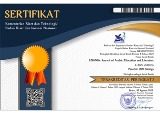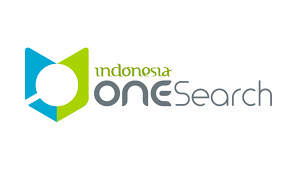Iktisāb al-Lugah al-‘Arabiyyah min al-Bī`ah al-Iṣṭinā’iyyah bi Jāmi’ah Maulānā Mālik Ibrāhῑm Malang
Abstract
Keywords
Full Text:
PDFReferences
Al-Osaili, A. A. Ibrahim. (2002). Tharāiq Ta’lῑm al-Lugah al-‘Arabiyah li an-Nathiqῑna bi Lugāt Ukhrā. Jami’ah al-Imam Muhammmad Ibn Sa’ud.
Alyan, A. F. (1992). Al-Mahārāt al-Lugawiyah Māhiyatuhā wa Tharāiqu Tadrῑsihā. Daar al-Muslim
Arsyad, A. (1998). Madkhal Ilā Thuruq Ta’lῑm al-Lugah al-‘Arabiyah. Mathba’ah al-Ahkam
Bahruddin, U., Andrian, R., Halomoan, & Mubaraq, Z. (2021). The Teaching of Maharah Qira ’ ah in Arabic for Economic Management. 58, 9377–9383.
Bahruddin, U., Ramadhan, M. F., & Bahruddin, W. (2021). Improvement of speaking skills through the use of Arabic as an introduction language. Turkish Journal of Computer and Mathematics Education, 12(8), 2760–2768.
Bahruddin, U., Ramadhan, M. F., Halomoan, H., Alzitawi, D. U. D. M., & Hamid, M. A. (2021). The Quality Improvement of The Interaction Indicators of The Arabic Language Learning in Higher Education. Izdihar : Journal of Arabic Language Teaching, Linguistics, and Literature, 04.
Chamot, Anna (1987). The Learning Strategies of ESL Students, in Wenden, A. and Rubin, J. (eds.), Learner Strategies in Language Learning. London: Prentice-Hall.
Chomsky, N. (1972). Language and Mind. Harcourt Brace Jovanovich.
Creswell, J. W. (1990). Penelitian Kualitatif & Desain Riset. Mycological Research, 94(4), 522.
Dawud, M.M. & Bahruddin, U. (2018). Al-‘Arabiyah wa ‘Ilm al-Lugah al-Hadῑts. CV. Lisan Arabi.
Dylan Trotsek. (2017). Fungsi Bahasa. Journal of Chemical Information and Modeling, 110(9), 1689–1699.
Habibah, N. (2016). Lingkungan Artifisial Dalam Pembelajaran Bahasa Arab. Arabiyat : Jurnal Pendidikan Bahasa Arab Dan Kebahasaaraban, 3(2). https://doi.org/10.15408/a.v3i2.4038
Hadi, N & Roihan (1982). Dimensi-Dimensi dalam Belajar Bagasa Kedua. Sinar Baru.
Jubaidah, S. (2015). Pembelajaran dan Pemerolehan Bahasa Arab di Pondok Modern Gontor di Darul Ma’rifat Gurah Kediri Jatim. PARAMETER: Jurnal Pendidikan Universitas Negeri Jakarta, 27(II), 178. https://doi.org/10.21009/parameter.272.09
Krashen, Stephen (1982). Principles and Practices of Second Language Acquisition. Oxford: Pergamon Press.
McLead, B. and McLaughlin, B. (1986). “Restructuring or Automaticity? Reading in a Second Language”. Language Learning.
Muttaqin, I. & Rasyidi, A. W. (2020). Taf’īl al-Anmāṭ at-Tafā‘uliyyah fī Ta’līm al-Lugah al-‘Arabiyyah Dākhila al-Bī`ah al-Iṣṭinā’iyyah ‘alā Ḍau’i an-Naẓariyyah al-Ijtimā‘iyyah aṡ-Ṡaqāfiyyah li Vygotsky: LISANIA: Journal of Arabic Education and Literature, 4(2), 196-216. http://dx.doi.org/10.18326/lisania.v4i2.196-216
Rizqi, M. R. (2017). Resonansi Bi’ah Lughawiyyah dalam Meningkatkan Akuisisi Bahasa Arab. Dar El-Ilmi, 4(2), 89–105.
Salim, L. (2017). Sejarah Pertumbuha dan Perkembangan Bahasa Arab. Diwan : Jurnal Bahasa Dan Sastra Arab, 3(1), 77. https://doi.org/10.24252/diwan.v3i1.2928
Schumann, J. (1975). “Affective Factors and the Problem of Age in Second Language Acquisition”, Language Learning.
Skinner, B. (1957). Verbal Behavior. New York: Appleton-Century-Crofts.
Sugiyono. (2013). Metode Penelitian Pendidikan Pendekatan Kuantitaif, Kualitatif, dan R&DSugiyono. 2013. “Metode Penelitian Pendidikan Pendekatan Kuantitaif, Kualitatif, dan R&D.” Metode Penelitian Pendidikan Pendekatan Kuantitaif, Kualitatif, dan R&D. https://doi.org/10.1. Metode Penelitian Pendidikan Pendekatan Kuantitaif, Kualitatif, dan R&D (pp. 85, 221, 273).
Zuhdi, H. (2009). Al-Bῑah al-Lugawiyah Takwῑnuhā wa Dauruhā fi Iktisābi al-Lugah. UIN-Maliki Press.
Yin, R. K. (2003). Robert K. Yin Case Study Research Design and Methods, Third Edition, Applied Social Research Methods Series, Vol 5 2002.pdf (pp. 1–181).
DOI: https://doi.org/10.18326/lisania.v5i1.71-87
Refbacks
- There are currently no refbacks.
Copyright (c) 2021 Uril Bahruddin, Syuhadak Syuhadak, Sutaman Sutaman
View My Stats








